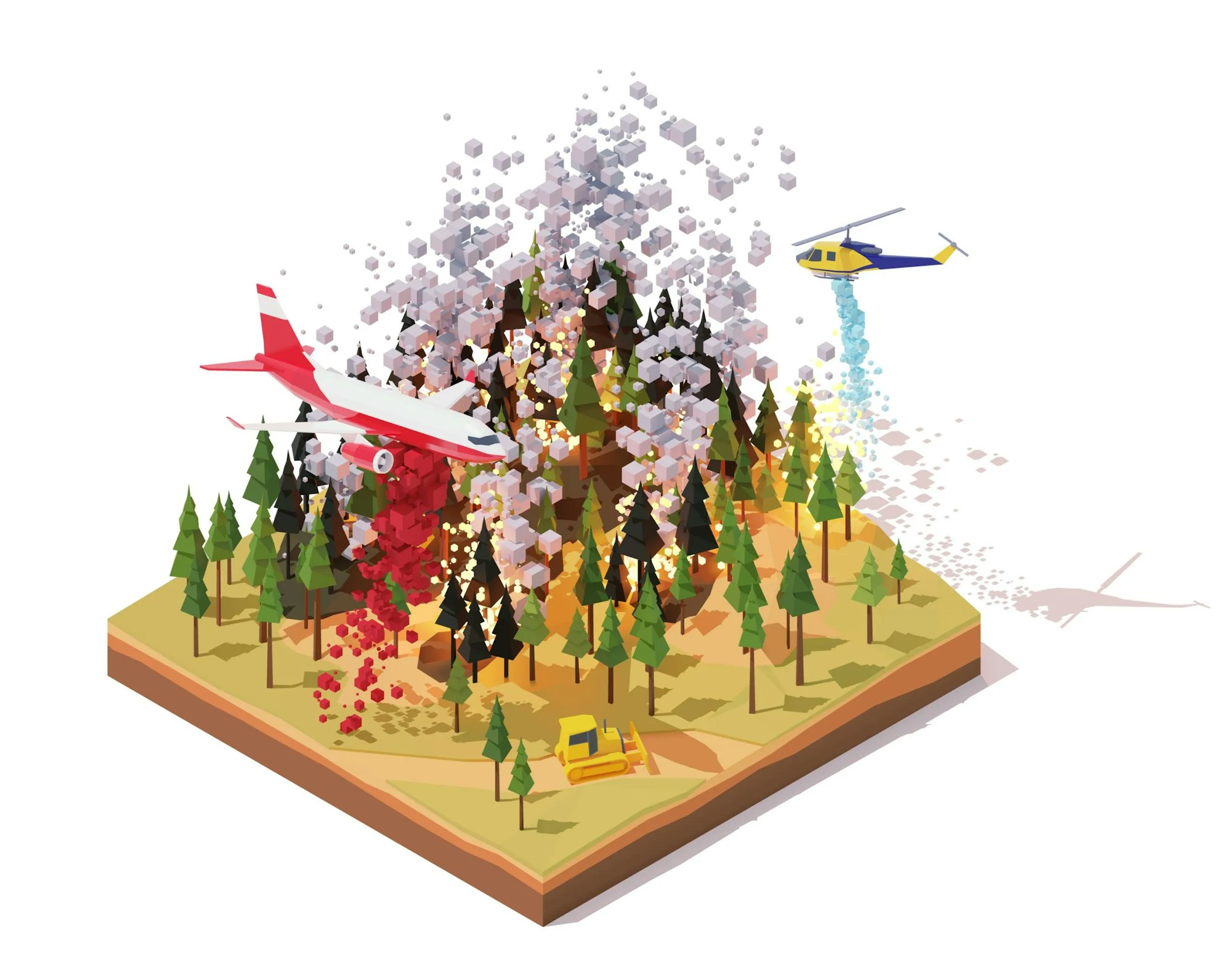Managing Wildfire With Advances In Technology

June 15, 2022 | Alex Terlecky
From drones to artificial intelligence, fire departments are turning to technology to support their operations.
As wildfires continue to rage throughout the West and are no longer restricted to a “season”, the need for advancements in firefighting technologies are more apparent than ever. Fueled by drought, lack of snowpack, and unpredictable weather, the amount of wildland burned in 2020 was more than any of year in modern record keeping.
In recent months, fire agencies have been turning to such things as supercomputers and drones to map fires, predict fire paths, assess risks before fires start, and even execute prescribed burns. Below we’ll outline new technologies already in-use and some of the leading risk mitigation steps recommended by industry-leaders in wildfire management.
Artificial Intelligence
Fire departments have started to utilize AI-based platforms in order to view a predictive map of a fire’s expected trajectory. The University of California, San Diego created an artificially-intelligent tool known as Firemap.
Firemap allows for real-time environmental data visualization, fire behavior modeling and forecasting, and “what-if?” analyses for potential fires.
The system utilizes data about weather, topography, and the dryness of vegetation received from satellites, ground sensors, and infrared radars to determine the location and future path of fires.
Another company, Fire AI , uses data analytics to provide detailed maps identifying hotspots and large scale fire distribution. This is done through the data provided by firefighters or infrared service provides utilizing specialized drones. Data collected is then uploaded to Fire AI’s cloud where it is then analyzed to produce maps for firefighting.
Using those maps, wildfire agencies can know with increased certainty where fires are and where they will be, allowing for proper allocation of resources, increased operational efficiency, and a reduction of risk.
In a similar fashion, some fire departments such as Colorado’s Aspen Fire Protection District have utilized cameras equipped with artificial intelligence to detect smoke in remote locations.
Cameras are placed in strategic lookout points throughout the backcountry and provide high-definition, 360-degree views that artificial intelligence scan as the camera rotates once per minute.
The company behind the technology, Pano AI, markets the technology as an advancement in early wildfire detection, enabling fire departments to catch small fires before they turn into big blazes.
Drones
As attention continues to be focused on firefighting, the use of drones has proved to exhibit major advantages when compared to human-piloted aircraft. For example, airplanes and helicopters used in firefighting can’t fly after dark, during smoky conditions, or in tight or difficult-to-reach locations. On top of that, there is an inherent risk to the pilots and crew when entering a burn zone.
Drones have been used in fighting recent blazes to perform operations such as thermal imaging to peer through dense smoke. They have also been used to deploy chemicals which start small, prescribed burns to prevent further spread of an approaching fire. This is a method known as airborne firebombing, and with drones, the process can be completed 100% remotely.
Drones also specialize in long distance trips and some manufacturers have designed their crafts to transport heavy loads such as firefighting supplies and industrial packages in and out of areas affected by wildfire.
The U.S. Forest Service already utilizes drones by sending them out into the air to monitor smoke and fire behavior. They are also actively investing in drone companies. The U.S. Department of Agriculture, which oversees the Forest Service, has supplied the startup Parallel Flight with $750,000 in grants to develop technology for use in battling wildfire.
More information
The CSD Pool is committed to helping members manage risk, achieve their goals within their communities, and protect their employees. Drone coverage for liability and physical damage became available in 2021 at below market cost.
For fire departments, the learning management system, VectorSolutions for Fire/EMS, is available to members at a discounted rate. This program provides classes, trainings, and certification for firefighters and emergency medical services personnel. For more information, visit csdpool.org/safety.
In addition, purchases made to improve safety or aid in loss prevention, including the purchase of cameras, drones, and other experimental equipment that may support firefighting efforts, are eligible for 50% reimbursement through our Safety and Loss Prevention Grant Fund.
For full details, visit csdpool.org/grants.
